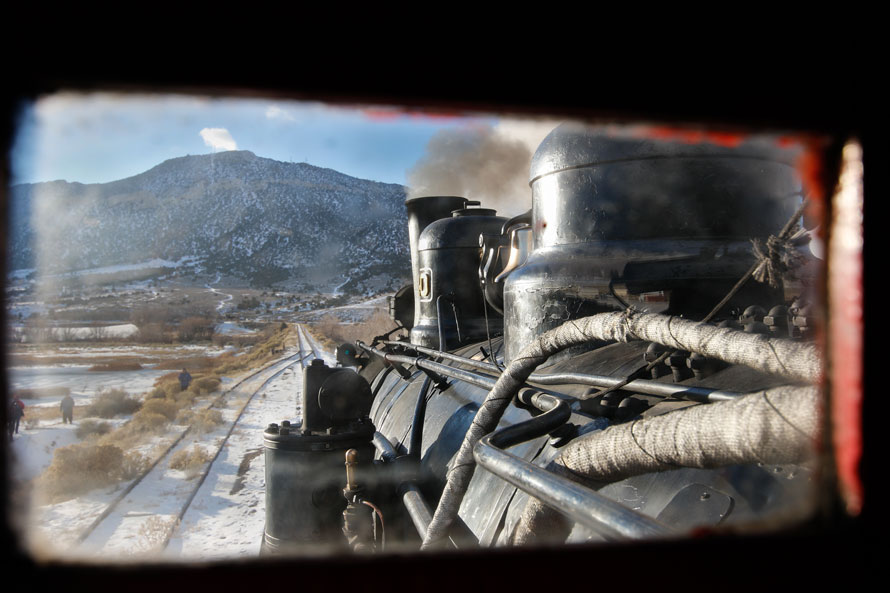
16:00 hours February 9th, 1941.
The crew of the outbound Steptoe Valley Flyer prepares their train for a fifteen mile round trip to wye the train at Keystone, Nevada, before boarding passengers on Train No. 3 heading to Cobre, Nevada where the line meets the Western Pacific mainline to Reno. At the helm, 4-6-0 number 40, built by Baldwin’s Philadelphia plant in 1909, pumps air in anticipation for her run up Robinson Canyon.
16:00 hours February 9th, 2019.
Fireman Con Trumbull, fresh in from Casper, Wyoming, and trainmaster Angie Stevens, a local in the town of East Ely (and engineer for today’s run), chat about slow orders, bulletins, and happenings reported on the 145 mile stretch of Nevada Northern mainline that await their nighttime run to Cobre, as the aroma of coal begins to fill the air inside the cab.
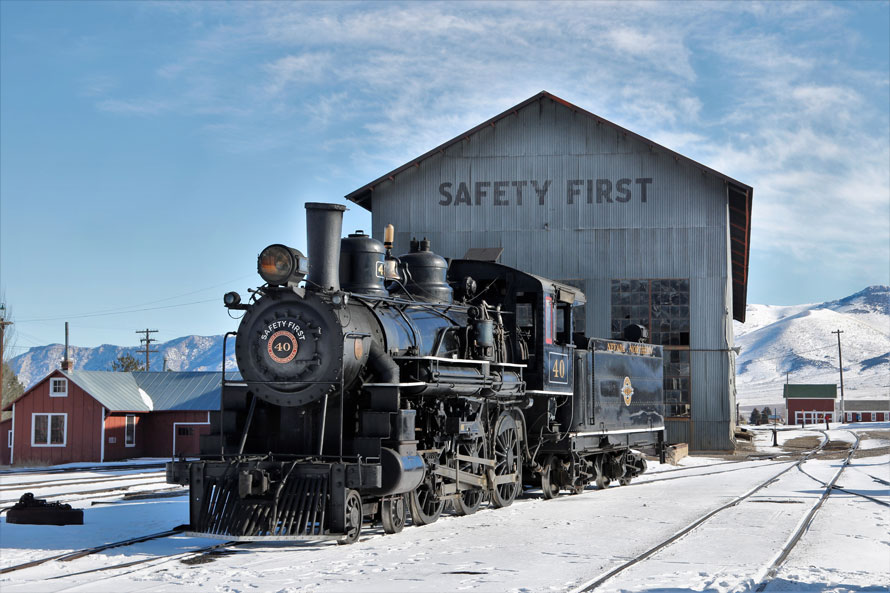
The Nevada Northern Railroad’s winter photoshoot is in full swing as I climb the ladder into the cab of the official locomotive of Nevada, Nevada Northern 4-6-0 number 40. I am greeted by the crew (Con Trumbull and Angie Stevens) and given brief safety instructions on what not to touch, locations of grab irons, and so on. The consist contains the original baggage and first class car of the Steptoe Valley Flyer for photographers to get a glimpse into the past. I decided to experience this re-creation from the cab for a slate of what I thought would be three run-bys and a half mile trip back to the East Ely station where the shoot would conclude for the evening.
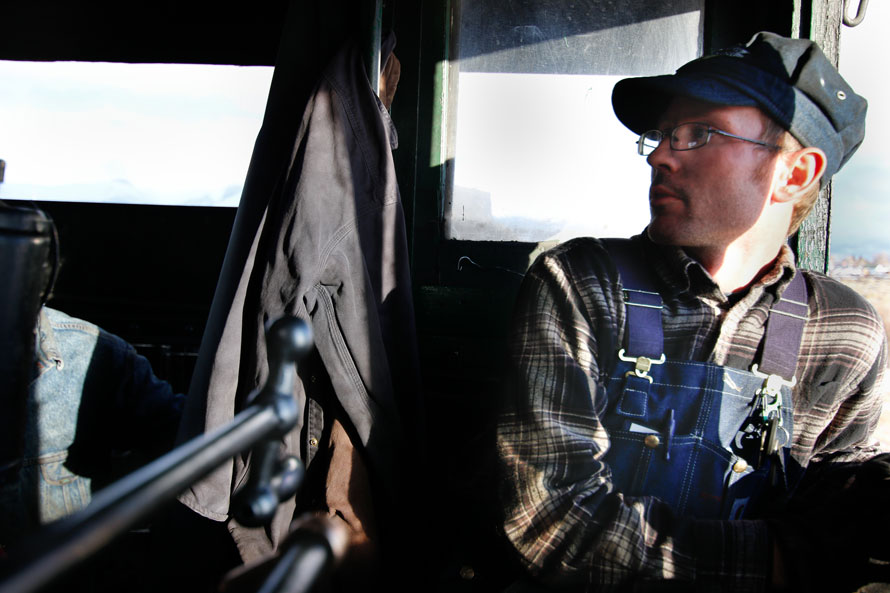
The cab of a hot steam locomotive is such an enchanting atmosphere, a glimpse into the past when steam was king. For those who have never been immersed in this environment, it is a sensory overload. The hiss of the butterfly firebox doors, the whine of the dynamo, and the iconic chuff of the stack lead you to a sense of euphoria. In spite the euphoria, my goal was to create a set of images that could relate back to Train No. 3 on a cold 1941 evening, when the Steptoe Valley Flyer still roamed the high desert of Nevada. Two thirds of the run-bys had passed when we were joined by Nevada Northern Railway’s President, Mark Bassett (known by the crews as Chief) who alerted us of a trespasser on the south end of the run-by line. We dropped Chief at the location on our third run-by. Then all of the sudden, we kept going.
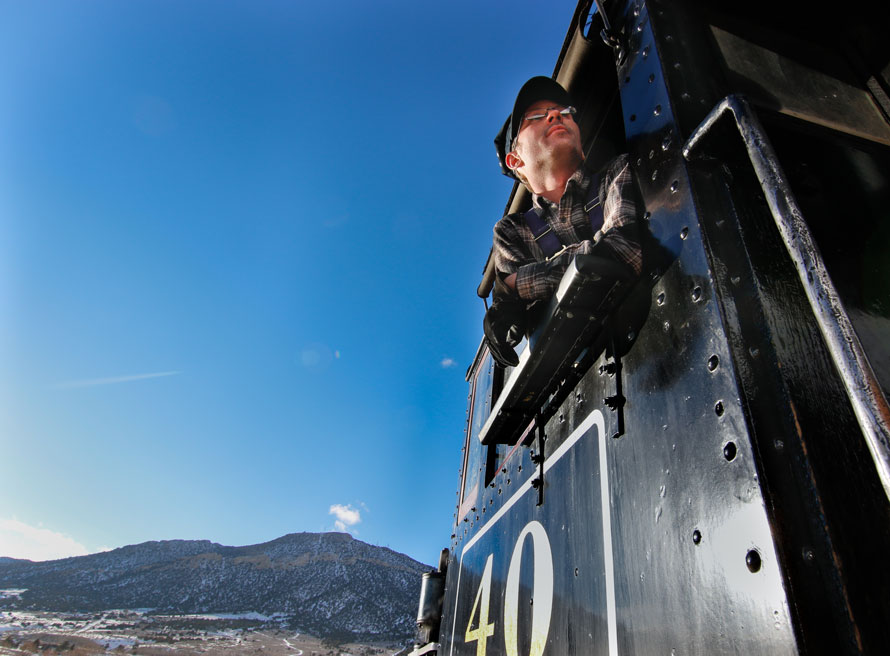
“Why haven’t we stopped yet? Did the other photographers get back on?”
“Nope. We’re gonna wye the train at Keystone before we run out of crew time, and you are comin’ along with us,” Angie said as we began the climb upgrade towards Keystone.
Now they certainly didn’t have to twist my arm to let me take a fifteen mile ride—in the left hand seat especially—in the cab of the queen of the Nevada Northern fleet! We pounded up the hill towards Keystone and Tunnel 1, the only original tunnel on the operated line which also doubled as a nuclear fallout shelter for the town of Ely. The grades varied from 1.5 to 3 percent as you climb almost the entire seven and a half mile trip towards the wye. No. 40, not built for this specific portion of the line, put on quite a show with only two coaches behind. Woosh! Smoke and darkness enveloped the cab with only the few in-cab lights breaking through the darkness as we traveled several hundred feet through Tunnel 1.
I put the camera down and savored the living history we were a part of.
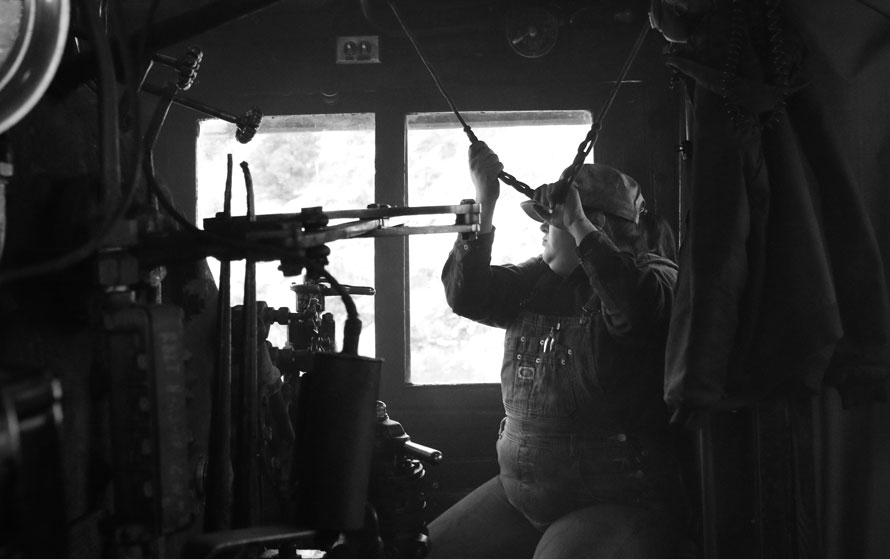
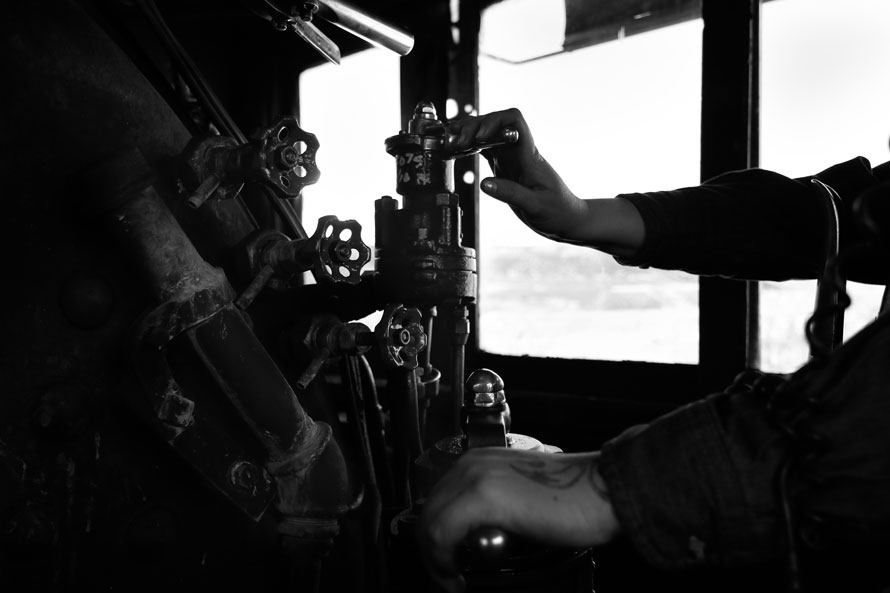
Paralleling Highway 50, the loneliest road in America, Con, Angie, and I began to talk of what drew us to railroads, how long they had been involved, and where they started out. It is times like these, even as a photographer, when it’s best to put the camera down and soak it all in. There is no picture you are going to take which can create a memory like rambling on with the crew of The Steptoe Valley Flyer and being “one of the guys.” It is an aesthetic not able to be captured by simply looking through a viewfinder, but instead, by submersing yourself in a world no longer able to be seen on a day to day basis. Who would’ve known that a trip to the middle of nowhere could bring a meaning more than just living behind a lens. I put the camera down and savored the living history we were a part of.
In these moments looking out the cab windows, I couldn’t help but think how, in the 1940’s, this was an engineer’s office. Sitting in the left hand seat of the engine my mind began to wander to the crew who sat in this seat before me, flying across the high desert looking out from their “office” day after day. Whether you were the engineer on the Daylight, or fireman on the Virginia Creeper, the view from the cab was commonplace for the brethren of the railroad. The scenery could be different, but the history of that view from the office window shared a deeper meaning among those who lived in the cab.
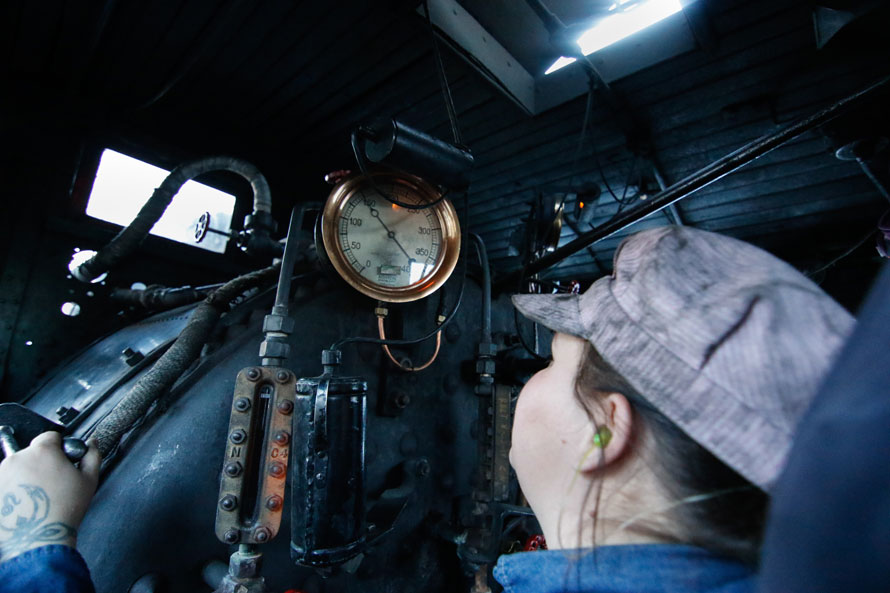
As we negotiated the wye at Keystone, the sun began to duck behind the mountains, and the photographers we left behind in Ely had caught up with us in their cars to chase our return trip. The return trip was all downhill, which meant skillful breaking by Angie, and a break for Con who was shoveling coal most of the way up. In between ringing the bell for grade crossings, Angie and Con taught me about the Nathan Injectors and how to operate them. They were even able to coerce me into throwing a couple of scoops of coal into the firebox, assuring me I wouldn’t screw up their fire because they needed to bank the engine over anyway. (Needless to say I was far from being a natural.)
Darkness was cast across Robinson Canyon as we exited Tunnel 1 for the last time only two miles outside of Ely, and photographers still pursued us from Highway 50. I once again picked up my camera from the floorboard to catch the firebox glow as coal was thrown in. Soon, the lights of Ely were right outside our window.
Don’t always live through the lens, but instead, take time to savor the moment in history you are a part of.
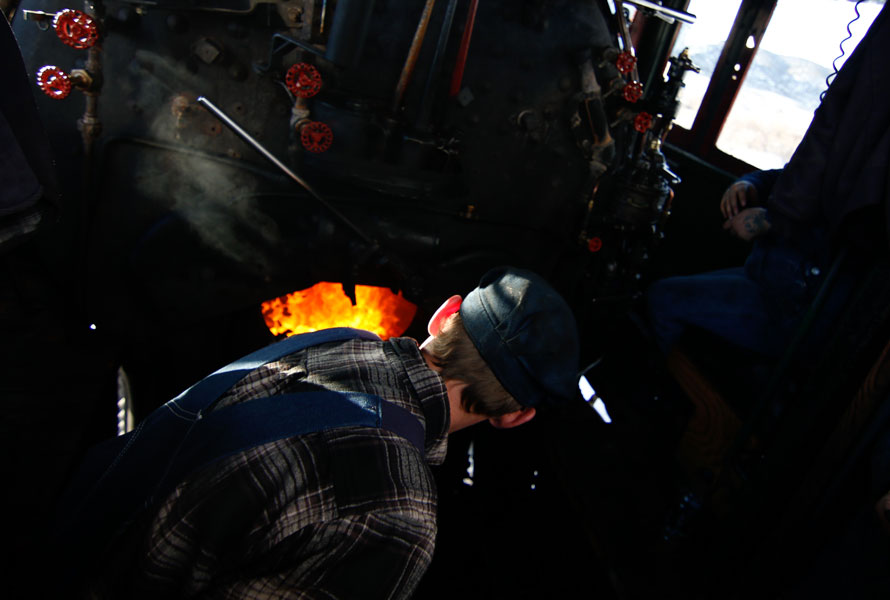
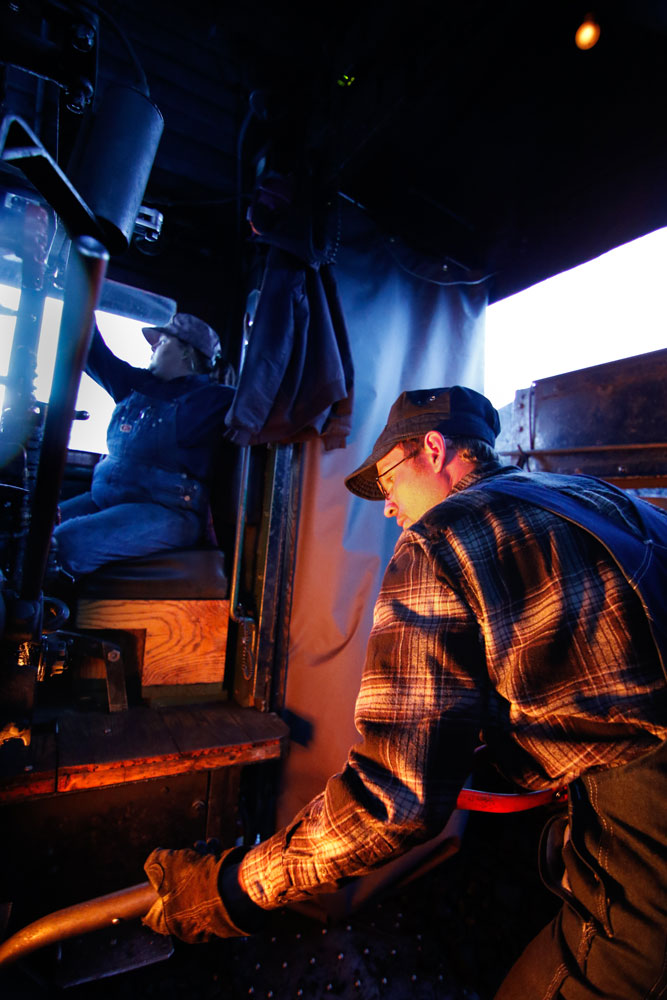
“Your friend is going to be so mad at you,” Angie said from the right hand seat as we pulled in on the ladder track in East Ely. My travel partner Dan Drennen lingered a few tracks over.
“Angie. Mind if we make his day and get him up here while you put her to bed?”
“Sure!” Angie replied as I leaned out the gangway waving him up the ladder to join us as we dumped the cars off and dropped ash.
The look on Dan’s face was worth the whole trip out. The opportunity to share what everyone loved is what it is all about—it’s why we all love what we do. While taking photographs to replicate history, or to preserve that history and keep it alive, everything came full circle on that brisk February evening.
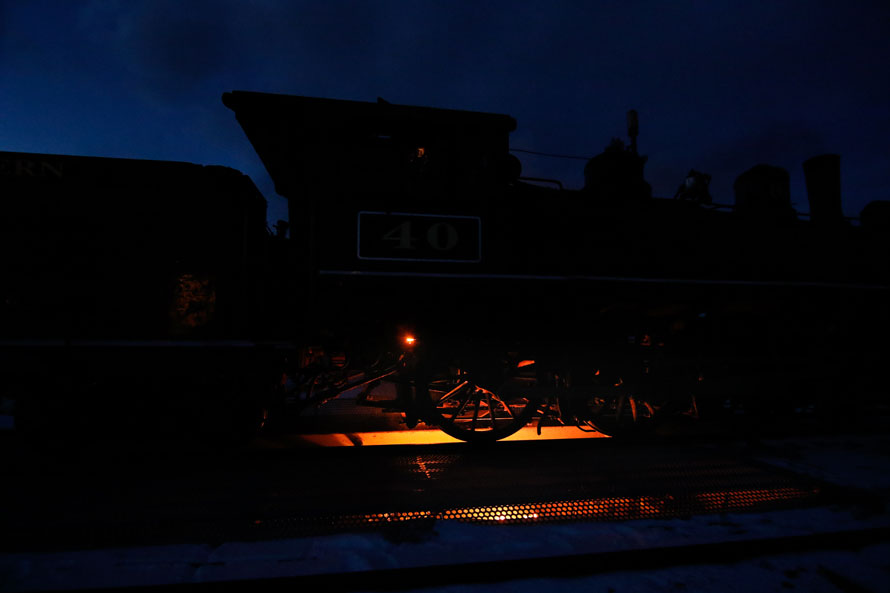
As Con opened the ash pans the last light of day had faded into darkness. We both shook hands and thanked the crew for everything. We were only halfway through the weekend, but if this had been the end, I would have been satisfied. Not for the photos I had taken, or the thrill of a cab ride, but for the lesson that we as photographers should learn. Don’t always live through the lens, but instead, take time to savor the moment in history you are a part of.
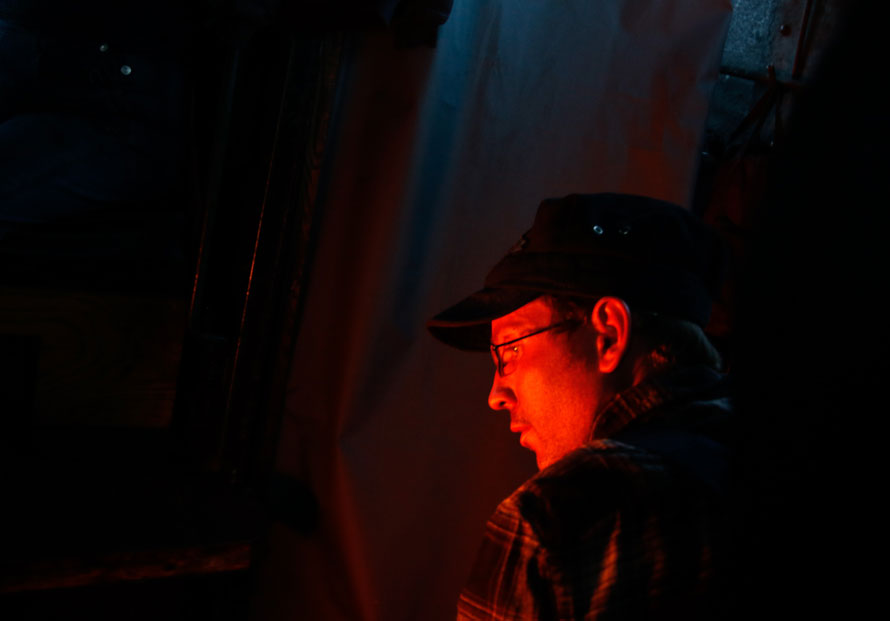
The Nevada Northern Railway still holds over twenty-eight miles of original mainline from Highline Junction in the north to Keystone (near the mines at Ruth) in the south, along with all the original equipment and buildings in Ely. For photographers, it truly is the spectacle of steam railroading in the modern era. The main facilities remain untouched by the modern era of technology. In February, the railroad sponsors two weekend photo charters where all of their equipment runs the entire length of the line with multiple consists and plenty of amazing photo opportunities.
Jonathan Riley – Photographs and text Copyright 2019
Wonderful! Thanks!
Jonathan,
An outstanding group of photographs and an intriguing story to accompany them. Thank you for sharing your experiences; I really enjoyed being on the viewer’s side of your talents and vision.
Matthew
Matthew,
Thank you for the kind words! I hope that through my experiences other people can learn ways to interpret how they create images and the process of creating history. Glad you enjoyed the experience!
Jonathan